In pictures: Flora and fauna of Socotra
- Published
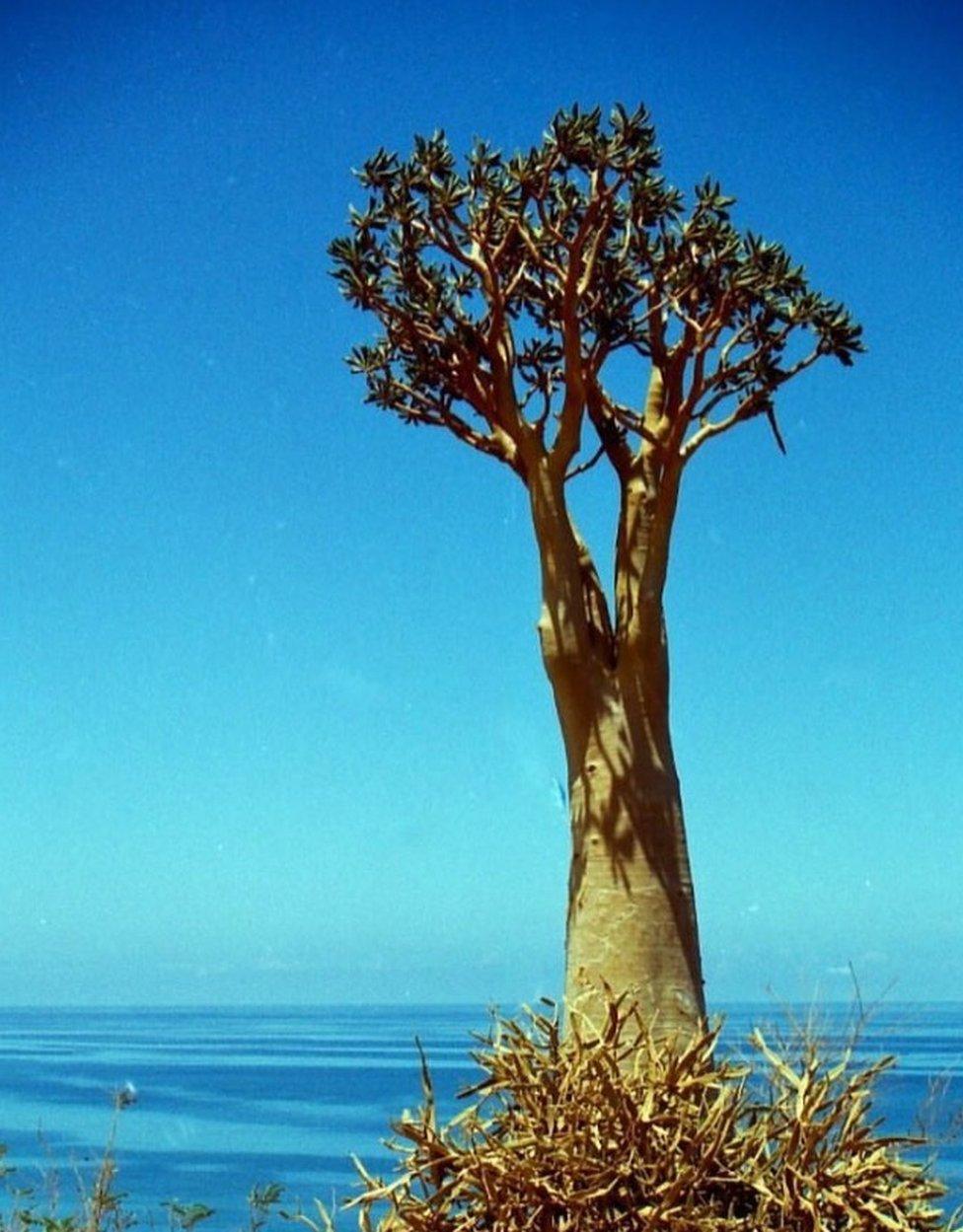
Socotra's unique flora has been attracting botanists since the 19th century and, more recently, European pharmaceutical companies.
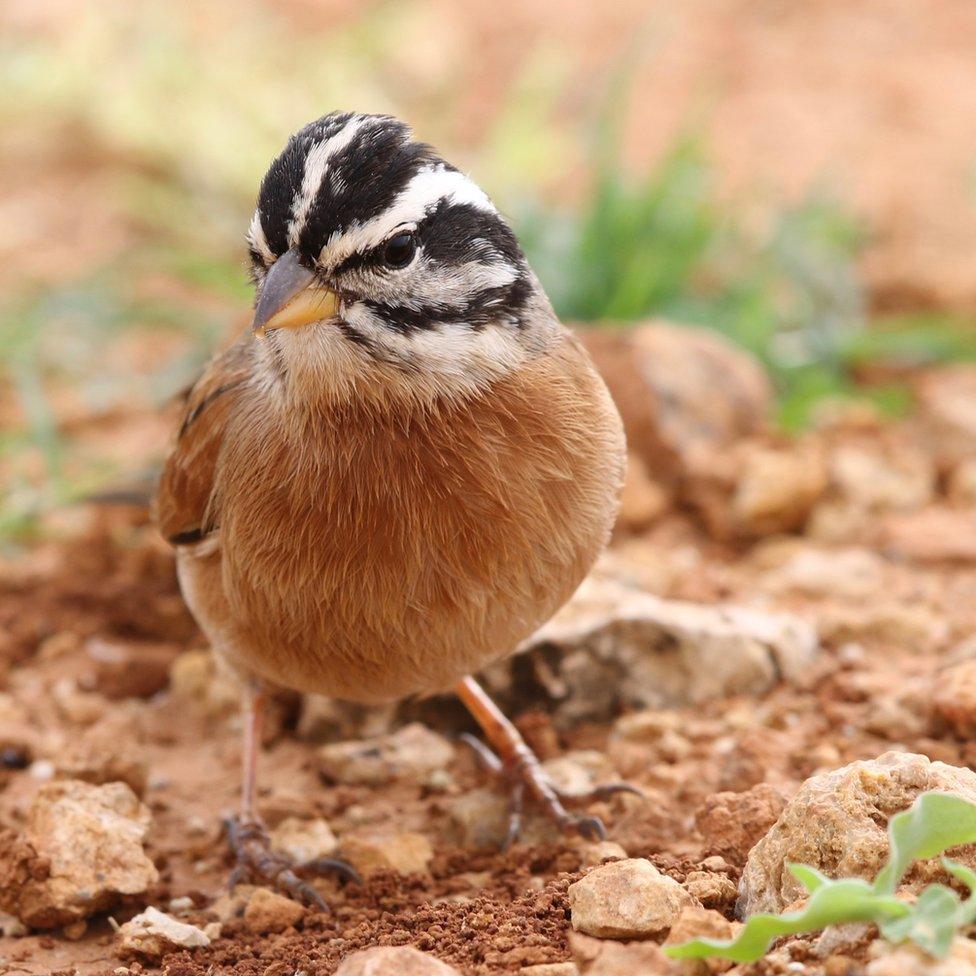
The rare, endemic Socotra Bunting, Emberiza Socotrana. It is found on the high grassy pastures of the Diksam Plateau and is one of nearly a dozen of the island’s bird species that exist nowhere else in the world. Threatened with habitat loss, it is on the International Union for Conservation of Nature (IUCN) Red List of vulnerable species.
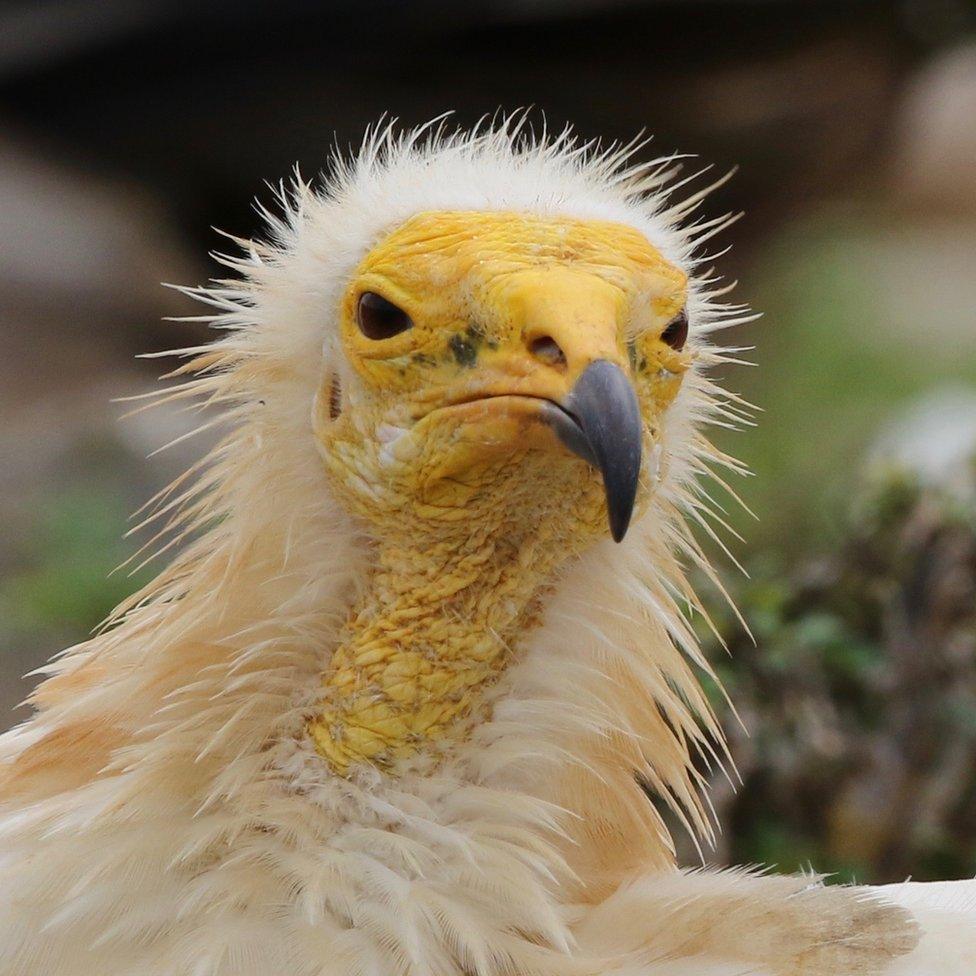
Egyptian Vulture, Neophron Percnopterus. The ubiquitous scavenger bird of Socotra, this vulture is such a common sight that the locals call it the ‘baladiya’ – ‘the municipality’ – since it disposes of so much of Socotra’s mounting litter.
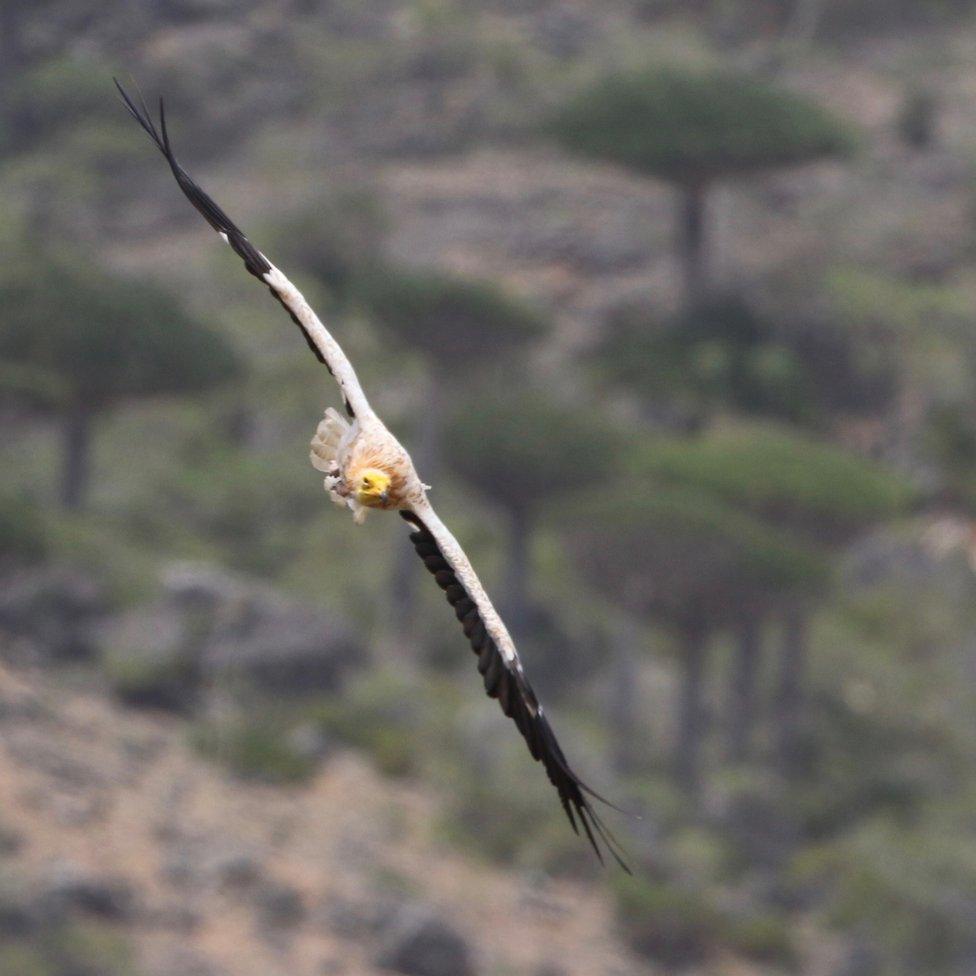
In the mountains, Egyptian Vultures can be seen soaring on the thermals, while down in the villages they will hop across the sand in search of food, unafraid of humans.
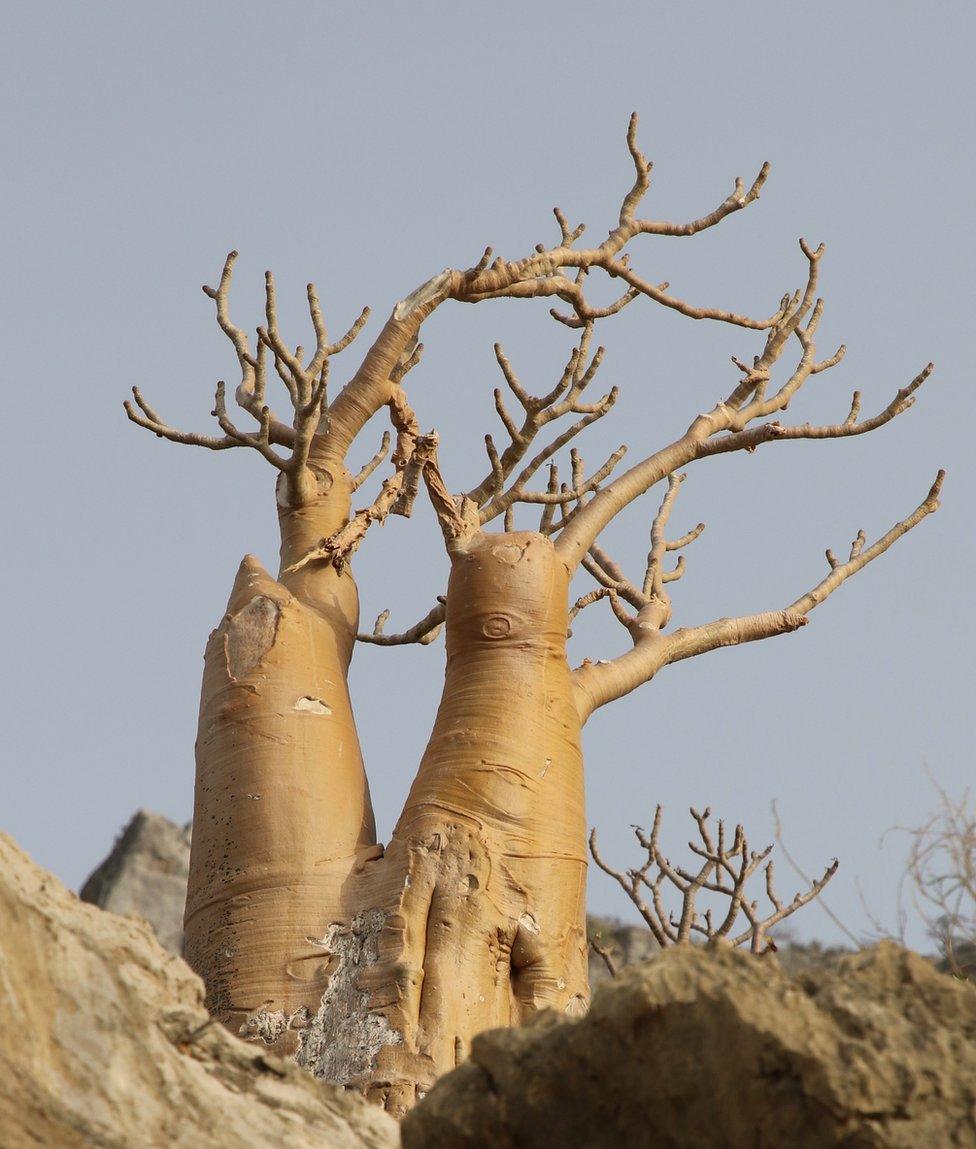
Socotran Desert Rose, Adenium Obesum Socrotanum. This extraordinary-looking plant is sometimes called ‘the bottle tree’ due to its odd shape. Its trunk can grow up to 2.5 metres in diameter and in spring it produces pink flowers. A subspecies of southern Arabia’s desert rose, it is endemic to Socotra. Of the island’s 825 plant species, an estimated 307 are endemic, found nowhere else on Earth.

Socotra Cormorants, Phalacrocorax Nigrigularis. A coastal species of cormorant, they congregate in large flocks from the Gulf to the Horn of Africa. They can often be seen flying low across the waves at dusk in formation. Despite their large numbers, they are threatened by coastal development in the Middle East.
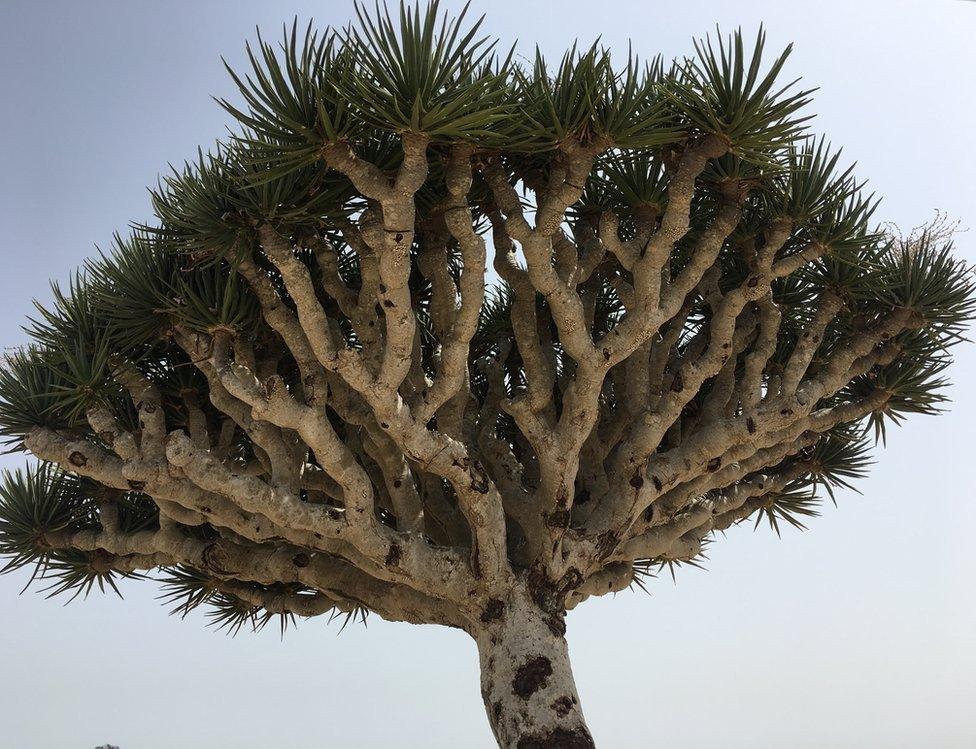
Dragon's Blood Tree is known to Socotrans by its Arabic name, Damm Al-Akhwayn – Blood of Two Brothers. Endemic to the remote Haghir Mountains of Socotra, it is named after the crimson sap that farmers tap to sell in markets, as both a medicinal balm and as lipstick. Socotrans say the sap was used by Roman gladiators to help heal their wounds.

A tranquil beauty spot to the east of Hadibo. Despite Unesco efforts to safeguard Socotra’s natural heritage as a World Heritage Site, the island is threatened by unplanned development, man-made pollution, and large tracts of prime coastal land sold to foreign investors in secret deals.